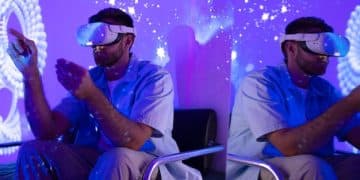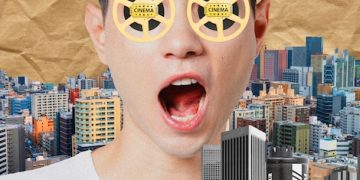Beyond the Museum: Experiential Art’s Impact on US Culture
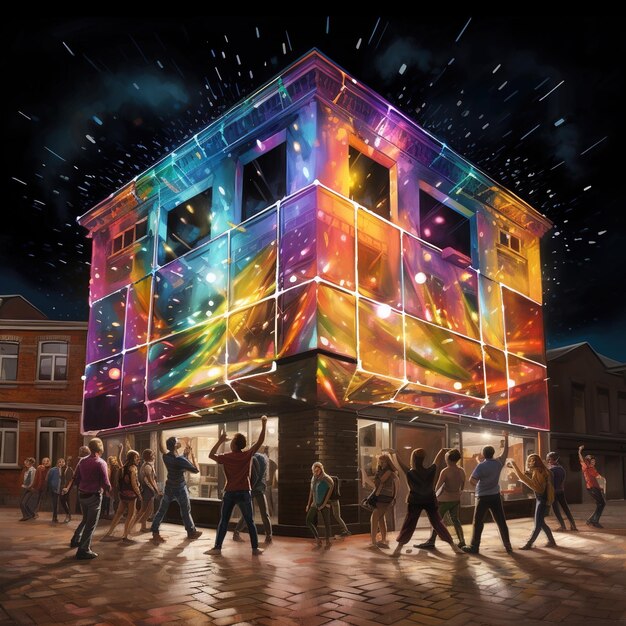
Experiential art transforms cultural engagement in the US by offering immersive experiences beyond traditional museum settings, fostering deeper connections and shaping the future of how we interact with art and culture.
The landscape of art and culture in the US is undergoing a significant shift. **Beyond the Museum: Experiential Art and the Future of Cultural Engagement in the US** lies a new era where art transcends the confines of galleries, inviting audiences into immersive, interactive experiences.
The Rise of Experiential Art in America
Experiential art is gaining momentum across America, breaking down the traditional barriers between art and audience. This shift moves art from a passive viewing experience to an active, participatory one, reshaping how people engage with culture.
This approach is not just about creating visually appealing installations, but about crafting environments and scenarios that evoke emotion, stimulate thought, and encourage interaction. It’s a dynamic field, constantly evolving to meet the changing expectations of a modern audience.
What Defines Experiential Art?
Experiential art distinguishes itself through several key characteristics that set it apart from traditional art forms. These defining features are fundamental to its immersive and engaging nature.
- Immersion: Creating environments that surround and envelop the audience, blurring the line between observer and participant.
- Interaction: Encouraging active participation from viewers, allowing them to influence the artwork and become part of the creative process.
- Sensory Engagement: Incorporating multiple senses—sight, sound, touch, and even smell—to create a holistic and memorable experience.
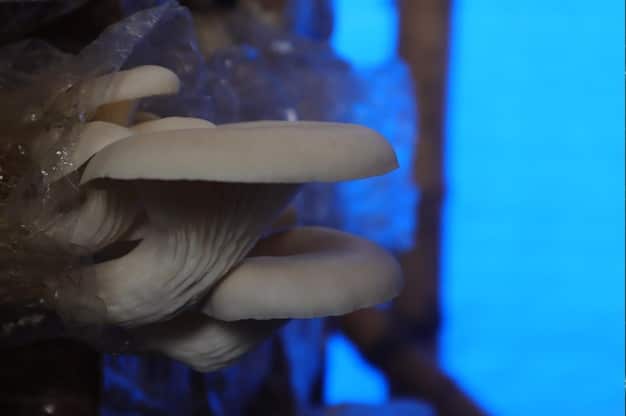
Experiential art isn’t just about looking at art; it’s about being *in* the art, becoming a part of the narrative, and co-creating the experience. This shift towards active engagement is key to its growing popularity and impact.
The Impact on Cultural Engagement
The rise of experiential art is profoundly impacting cultural engagement across the US. By offering more accessible and participatory experiences, it’s attracting new audiences and deepening connections with art and culture in innovative ways.
Traditional museums, while still valuable, often present art in a detached, observational manner. Experiential art, on the other hand, breaks down these barriers, making art more relatable, personal, and memorable.
Let’s dive into some specific areas where this impact is most evident:
- Increased Accessibility: Experiential art often appears in public spaces, making it accessible to a wider audience beyond traditional museum-goers.
- Deeper Emotional Connections: The immersive nature of experiential art fosters stronger emotional responses and personal connections with the artwork.
- Community Building: Interactive installations often facilitate social interaction and create shared experiences, strengthening community bonds.
Experiential art encourages dialogue, reflection, and personal interpretation. It empowers individuals to become active participants in the cultural landscape, shaping their own understanding and appreciation of art.
Examples of Experiential Art Installations in the US
Throughout the United States, numerous experiential art installations have captivated audiences and redefined cultural experiences. These installations showcase the creativity and innovation driving this movement.
From large-scale public art projects to intimate gallery spaces, these examples highlight the diversity and impact of experiential art in different contexts.
Rain Room (Los Angeles County Museum of Art)
The Rain Room, a standout exhibition at the Los Angeles County Museum of Art, enables visitors to experience what feels like walking through a downpour without getting wet. Advanced sensors detect movement, creating a localized dry zone wherever a person walks.
Meow Wolf (Multiple Locations)
Meow Wolf offers immersive, interactive storytelling through complex sets that mix escape rooms, jungle gyms, art galleries and psychedelic dark art. Known for its wildly imaginative and often bizarre creations, Meow Wolf invites participants to explore, discover, and co-create stories within their fantastical realms.
Yayoi Kusama’s Infinity Mirror Rooms (Various Museums)
Yayoi Kusama’s Infinity Mirror Rooms provide visitors with an otherworldly experience by creating seemingly endless reflections through mirrors and lights. Each room is a unique microcosm, often themed with colorful dots or sculptural elements, offering an immersive visual journey that plays with perception and space.
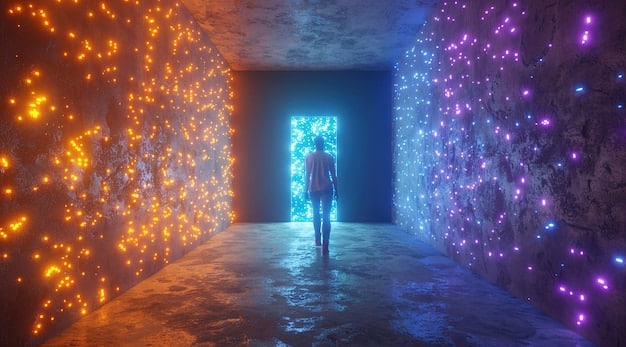
These examples demonstrate the ability of experiential art to transform ordinary spaces into extraordinary environments, stimulating curiosity and inspiring creativity.
The Role of Technology
Technology plays a crucial role in the development and creation of experiential art. From digital projections to interactive sensors, technology enables artists to create increasingly immersive and engaging experiences.
Technological advancements allow for greater control over sensory stimuli, enabling artists to manipulate light, sound, and even tactile elements to create specific atmospheres and effects. This integration of technology expands the possibilities of artistic expression and enhances the audience’s interaction.
Virtual Reality (VR) and Augmented Reality (AR)
VR and AR technologies are opening new frontiers for experiential art, allowing artists to create virtual and mixed-reality installations that transcend the limitations of physical space. These technologies enable audiences to explore fantastical worlds, interact with digital objects, and experience art in entirely new ways.
Interactive Sensors and AI
Interactive sensors and artificial intelligence (AI) are used to create art installations that respond to audience input, adapting and evolving in real-time. This level of interactivity transforms viewers into active participants, blurring the lines between artist, artwork, and audience.
Projection Mapping
Sophisticated projection mapping technology is the technique of projecting images or video onto irregularly shaped surfaces, like buildings or sculptures, to create dynamic visual displays. Once static objects are transformed into vibrant, changing displays, enabling immersive and site-specific artworks that engage viewers in a unique sensory experience.
Tech is a key component in experiential art, but it is also a complex one. Some artists blend technology to foster deeper human connection, while others choose techy elements that are more about the spectacle. To ensure that the art is accessible to a wide demographic, it is important to leverage technology in thoughtful, considerate ways.
Challenges and Criticisms
While experiential art gains popularity, it also faces challenges and criticisms. From accessibility concerns to questions about artistic merit, it’s important to address these issues to ensure the continued growth and evolution of this field.
Some critics question whether the emphasis on spectacle and interaction overshadows deeper artistic content. Others raise concerns about digital divide, which may limit access for certain members of the population.
To summarize some key concerns, let’s look at:
- Accessibility: Ensuring that experiential art is accessible to audiences of all backgrounds, including those with disabilities or limited access to technology.
- Sustainability: Minimizing the environmental impact of large-scale installations and promoting sustainable practices in art production.
- Artistic Integrity: Maintaining a balance between technological innovation and meaningful artistic expression, avoiding superficial spectacle.
Acknowledging and addressing the challenges surrounding experiential art is good for the long-term health and sustainability of the field. It requires open dialogue, thoughtful experimentation, and a commitment to inclusivity and innovation.
The Future of Cultural Engagement in the US
Experiential art is poised to play an increasingly important role in the future of cultural engagement in the US. As technology continues to evolve and audiences seek more immersive and interactive experiences, experiential art will likely become even more prevalent and influential.
This trend represents a broader shift towards a more participatory and democratic approach to culture, where individuals are empowered to shape their own experiences and connect with art in meaningful ways.
Consider these factors that will shape its future trajectory:
- Increased Collaboration: Greater collaboration between artists, technologists, and community organizations.
- Focus on Social Impact: Using experiential art to address social and environmental issues, raising awareness, and inspiring action.
- Personalized Experiences: Tailoring art installations to individual preferences and needs, creating more customized and meaningful engagements.
Community and Experiential Art: A Symbiotic Relationship
The relationship between community and experiential art is mutually beneficial, as experiential art serves as a powerful tool for community engagement, fostering social connections and collective experiences.
Community involvement is crucial for the success and relevance of experiential art installations. When artists collaborate with local communities, they create artworks that reflect their values, stories, and aspirations, fostering a sense of ownership and pride.
To show how these types of interactive experiences have an impact, we’ll focus on the following approaches:
- Collaboration: Bringing together artists and community members to co-create art installations that reflect their shared experiences.
- Education: Providing educational programs and workshops that teach community members how to create and engage with experiential art.
- Empowerment: Using art as a tool for empowerment, enabling community members to express their voices, challenge social norms, and advocate for change.
There is an art installation in San Antonio, Texas, called the “San Antonio Riverwalk Public Art Garden.” It is an example of art that engages various cultures through the celebration of local history and traditions. The garden features a series of interactive sculptures and installations that encourage visitors to explore the river’s rich cultural heritage.
By embracing community engagement, experiential art can become a catalyst for social change, fostering greater understanding, empathy, and collaboration.
| Key Point | Brief Description |
|---|---|
| 🎨 Immersive Experiences | Experiential art offers a more engaging alternative to passive viewing. |
| 🤝 Community Building | Interactive installations create shared experiences, strengthening community bonds. |
| 🚀 Role of Technology | Advanced tech enhances sensory appeal and interaction. |
| 🌍 Social Impact | Art addresses social and environmental issues, raising awareness. |
FAQs
Experiential art goes beyond simply viewing art, as it offers immersive environments and interactive elements that involve the audience directly. It breaks traditional barriers to allow visitors a participatory role.
While many experiential art pieces are showcased in museums, these pieces are found regularly in art galleries, and even public spaces like parks, streets, and empty buildings.
Technology is essential to the creation of experiential art, as it creates VR environments, interactive installations, and manipulation of light, sound, and even textures. Technology vastly enhances the art experience.
A common criticism of this type of art is the question of digital equity, as some individuals don’t have access to the technology required to immerse themselves in the art.
Because of technological evolution and audience demand for immersive experiences, experiential art will become an increasingly important aspect to culture engagement in America.
Conclusion
As we look to the future, experiential art promises to transform the way audiences both interact with and perceive culture. By pushing the boundaries of technology, promoting community engagement, and prioritizing inclusive experiences, this art form is poised to create a more vibrant, accessible, and meaningful cultural landscape for generations to come.

